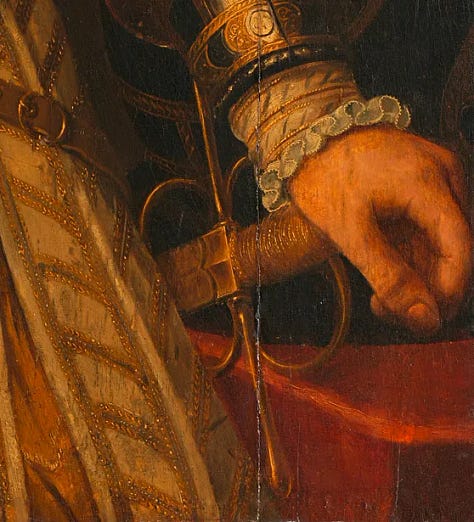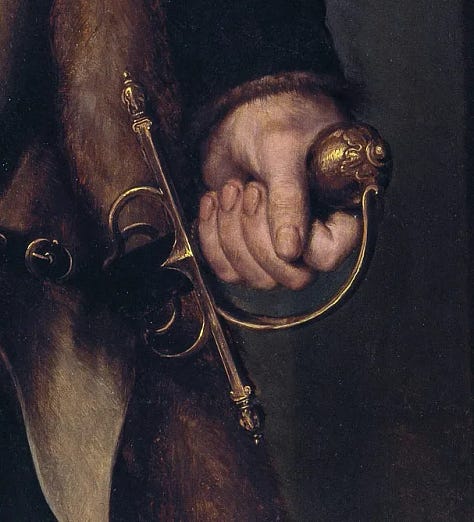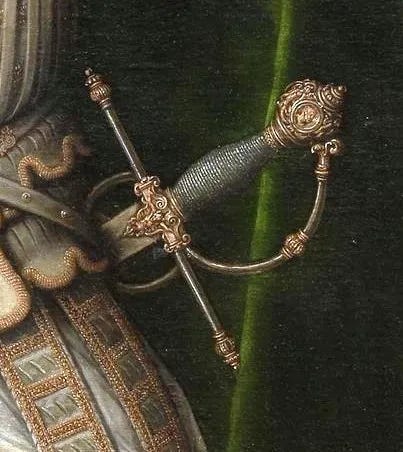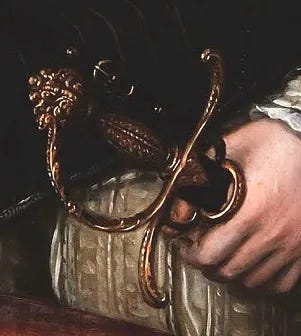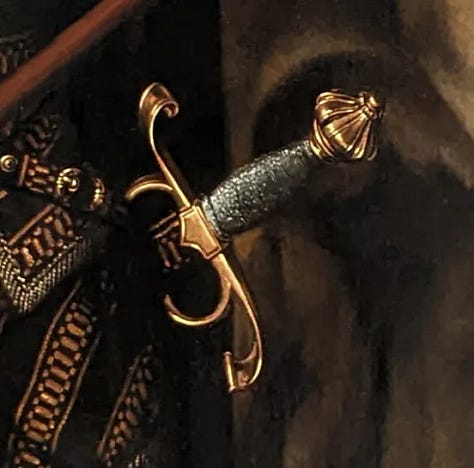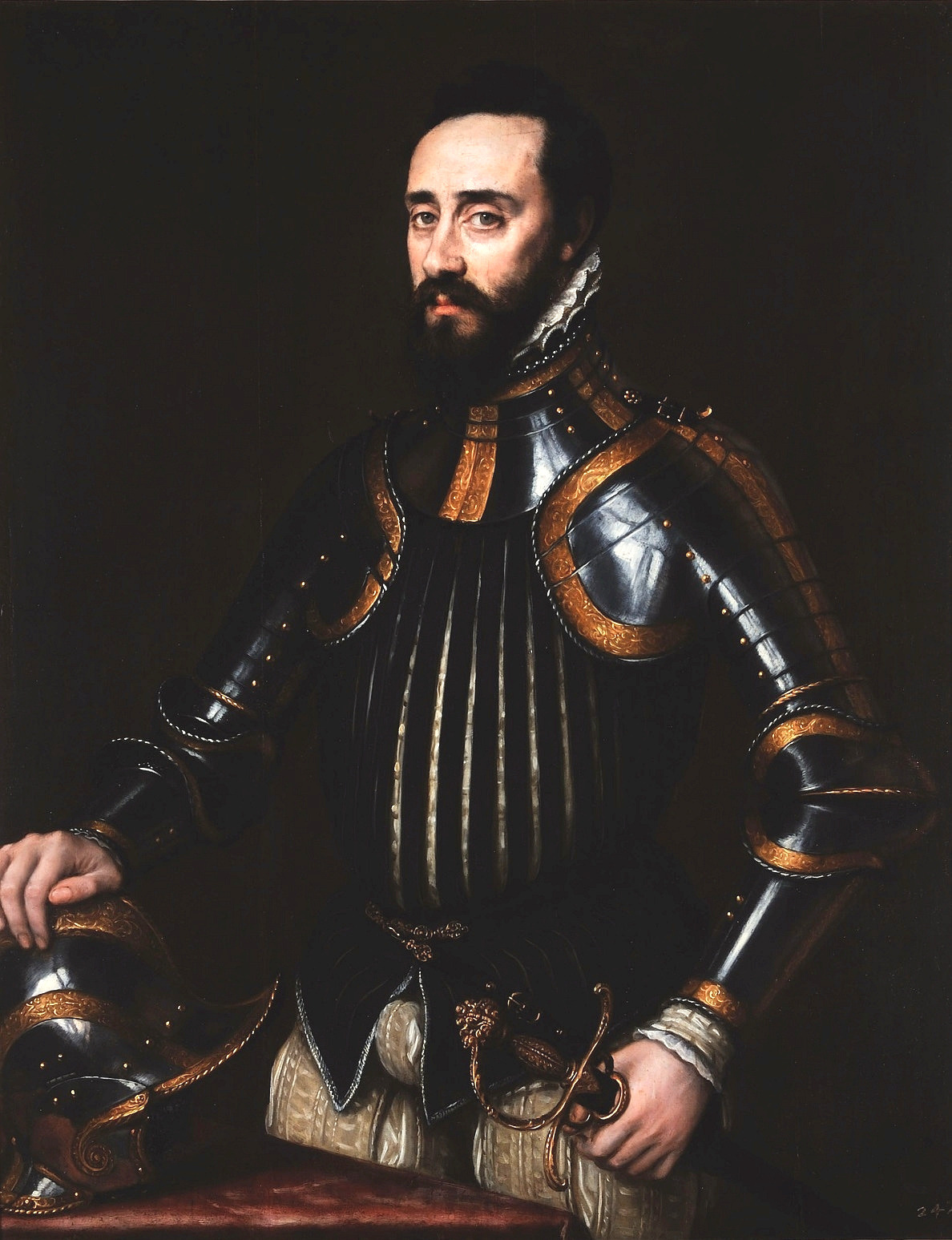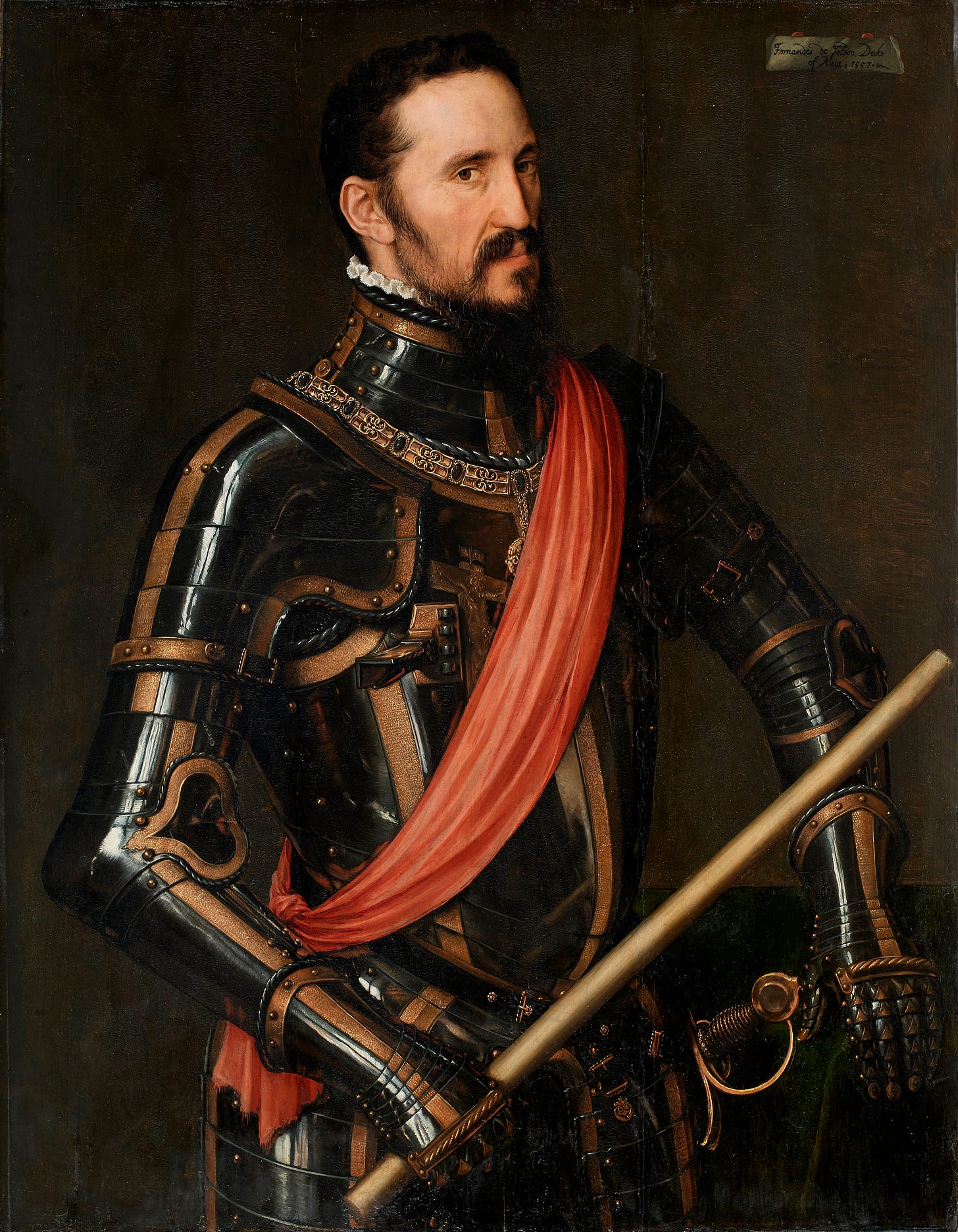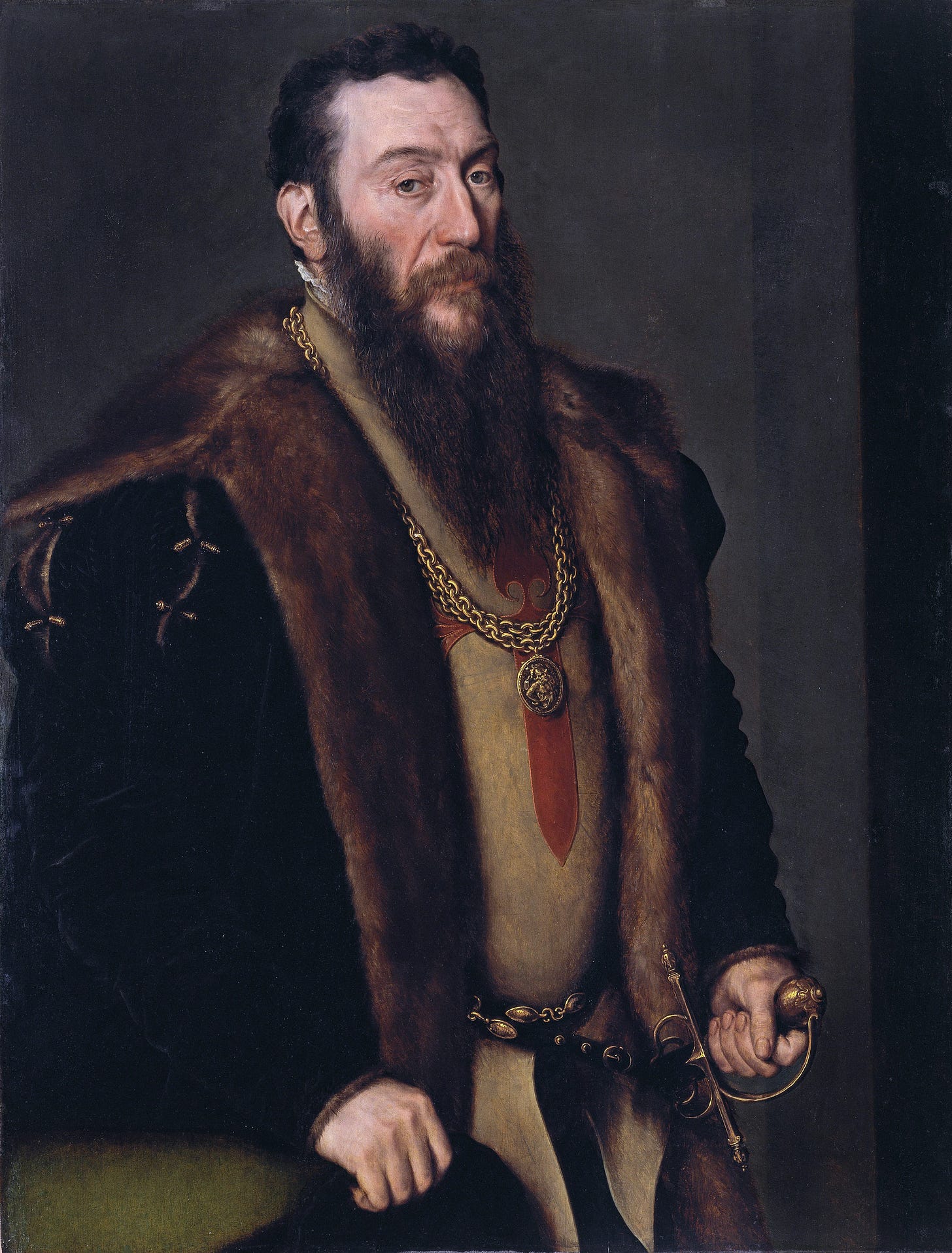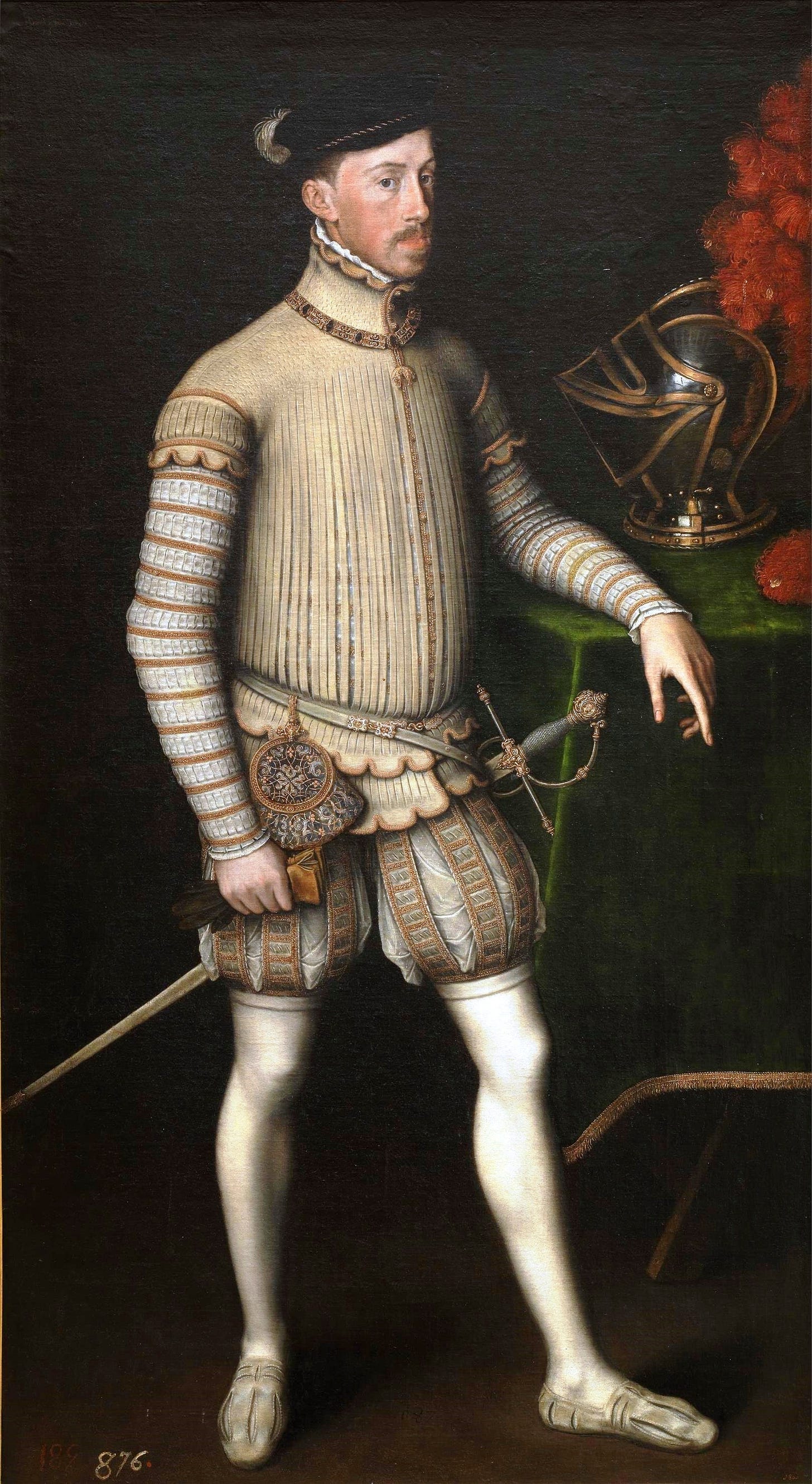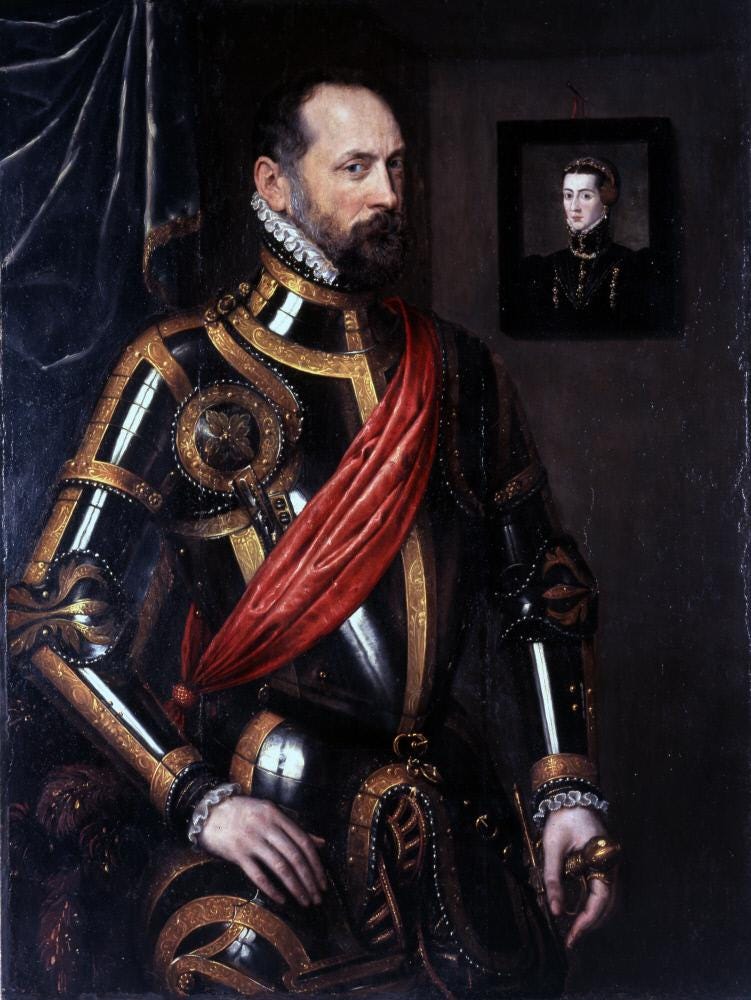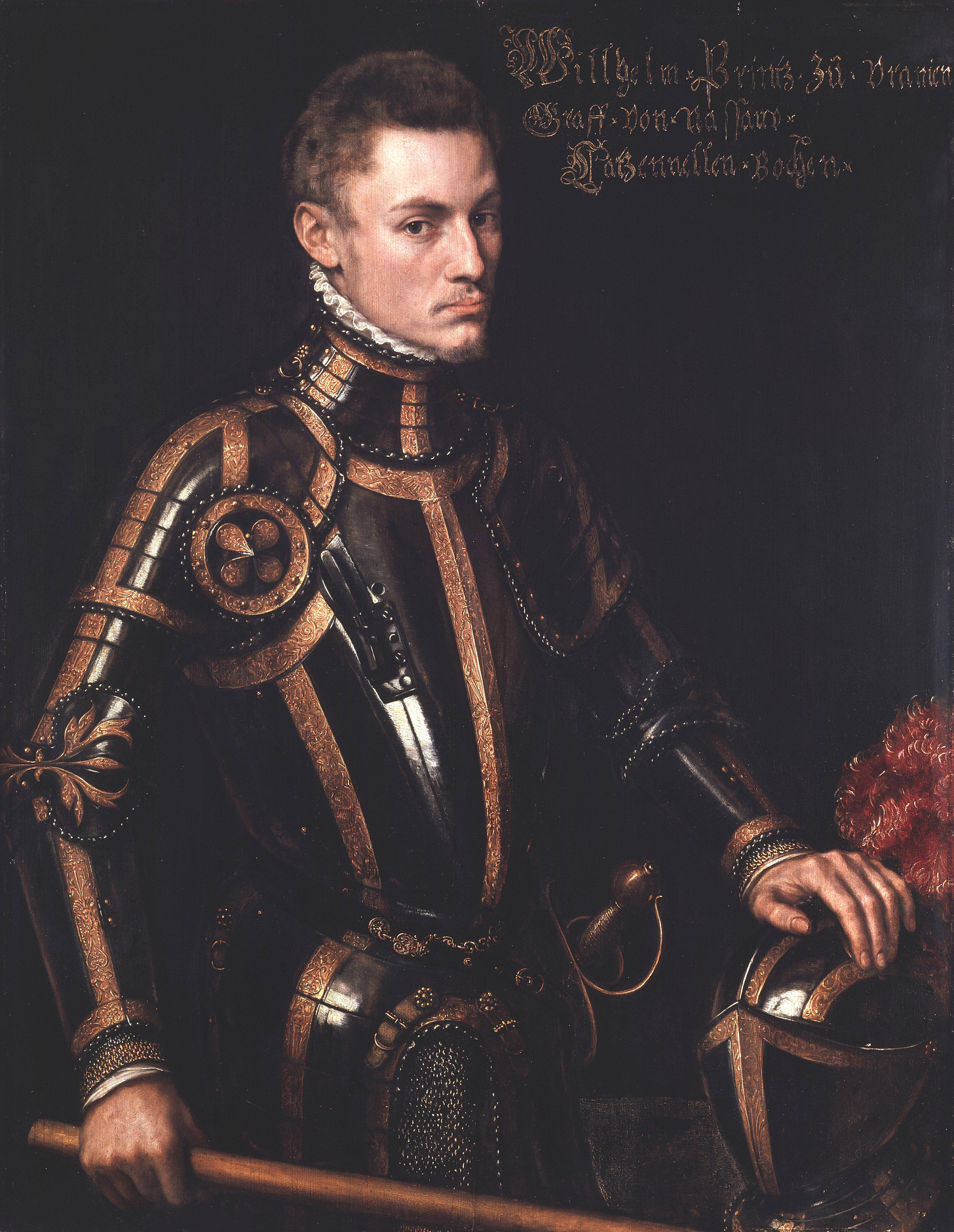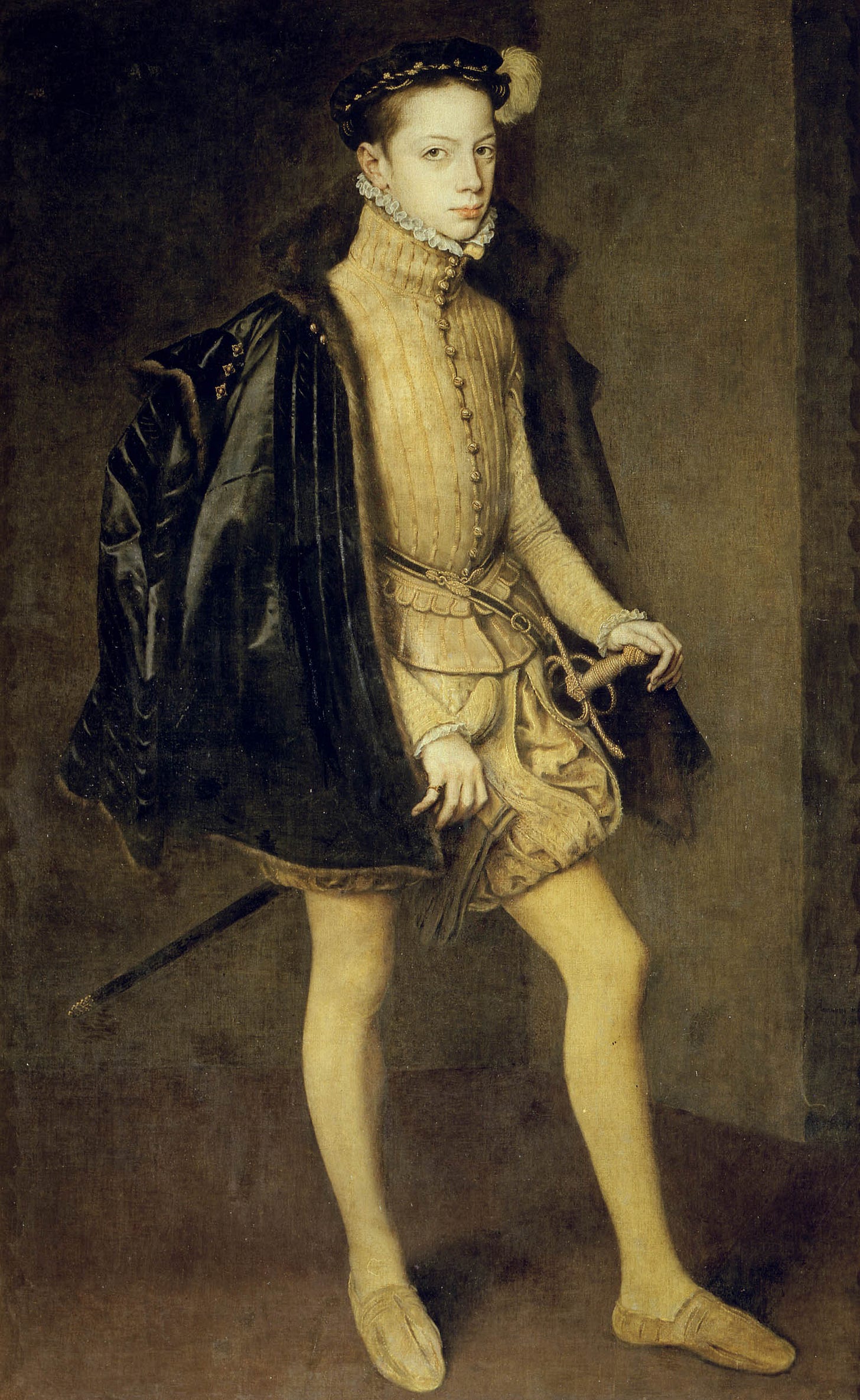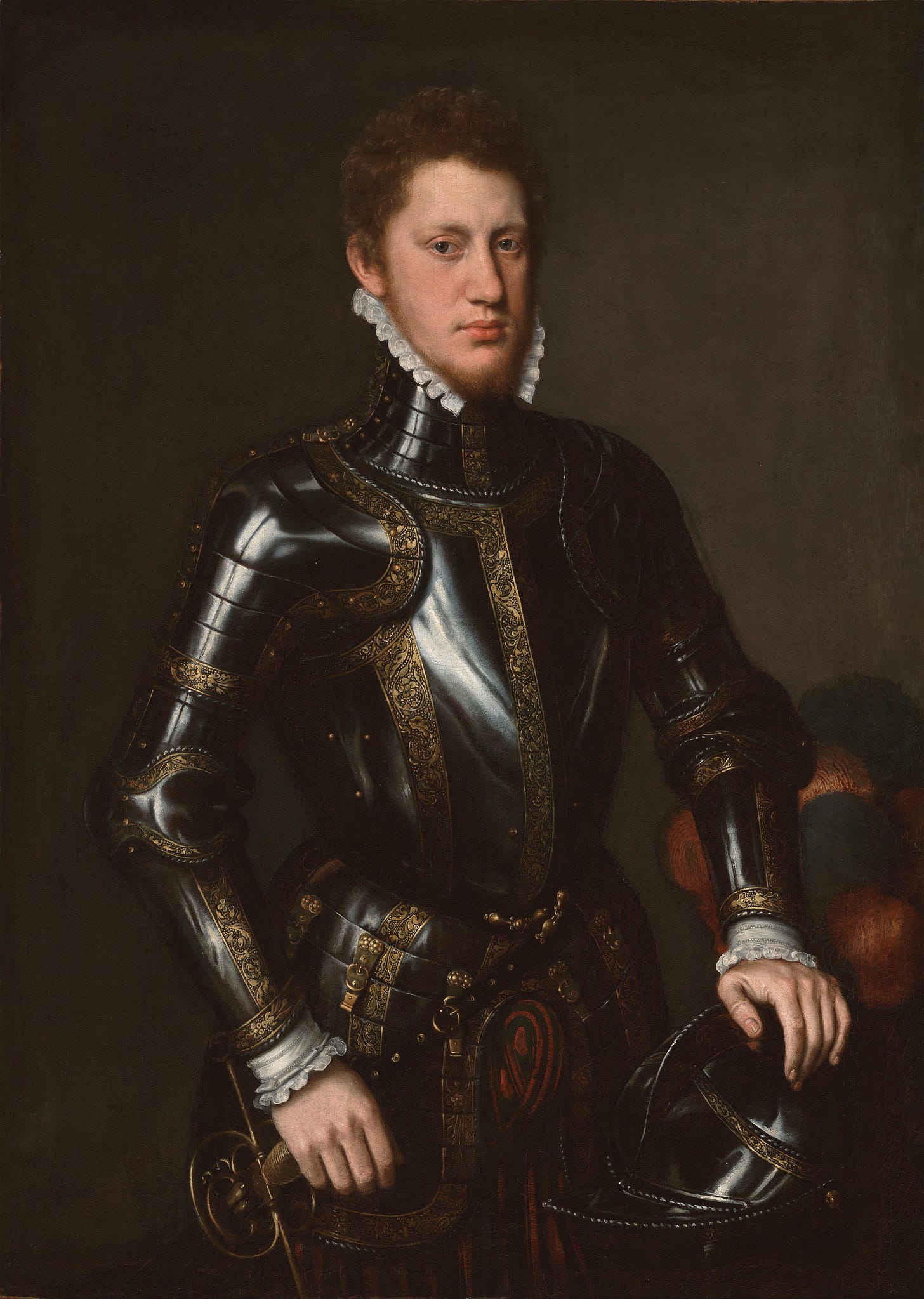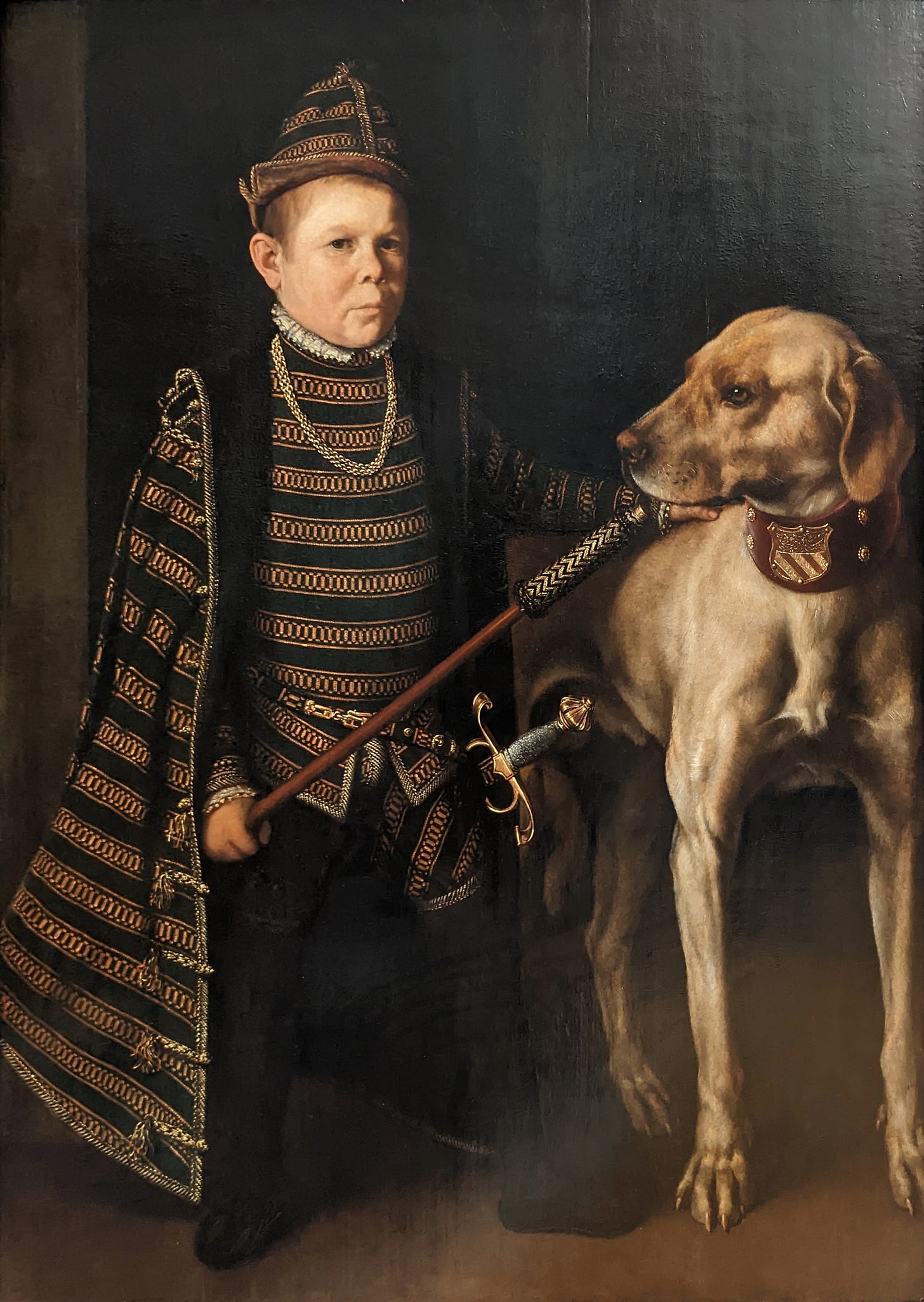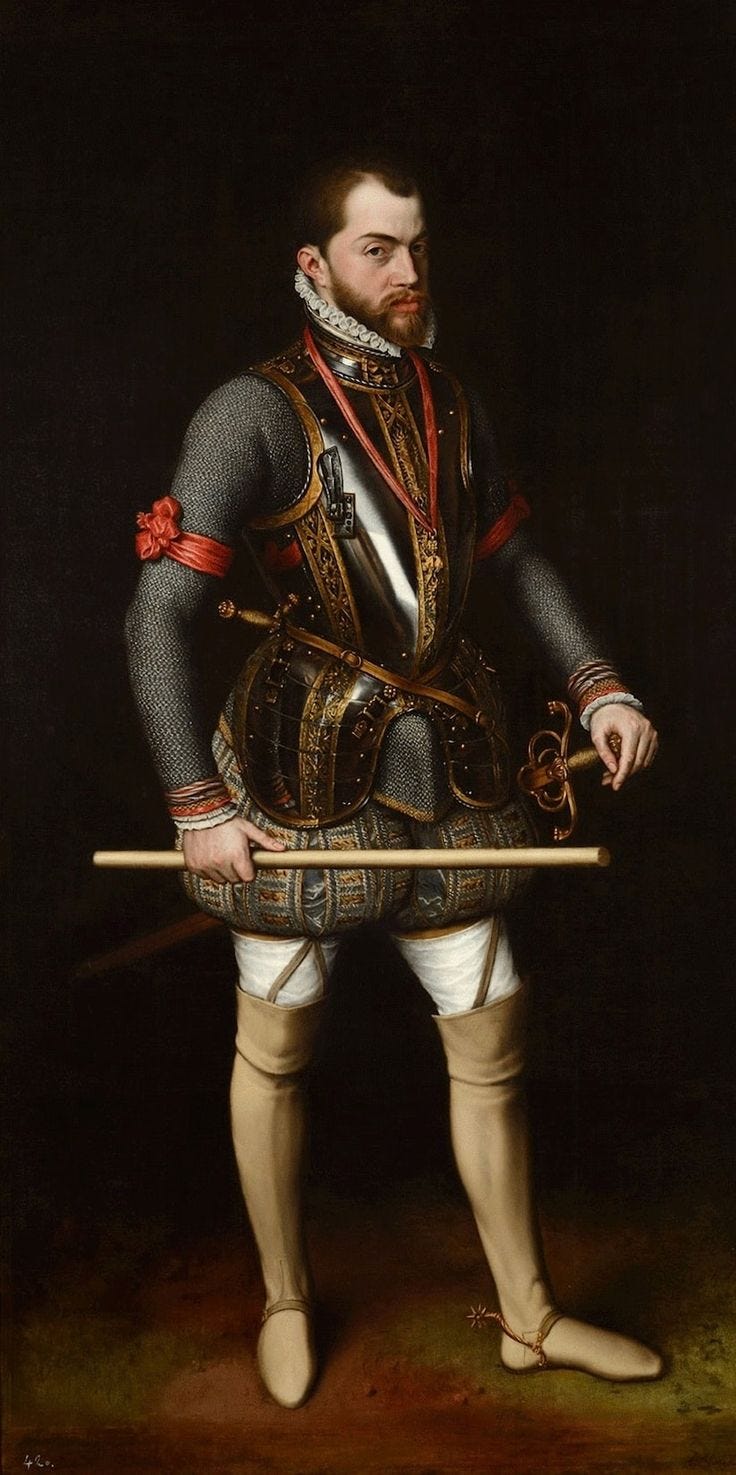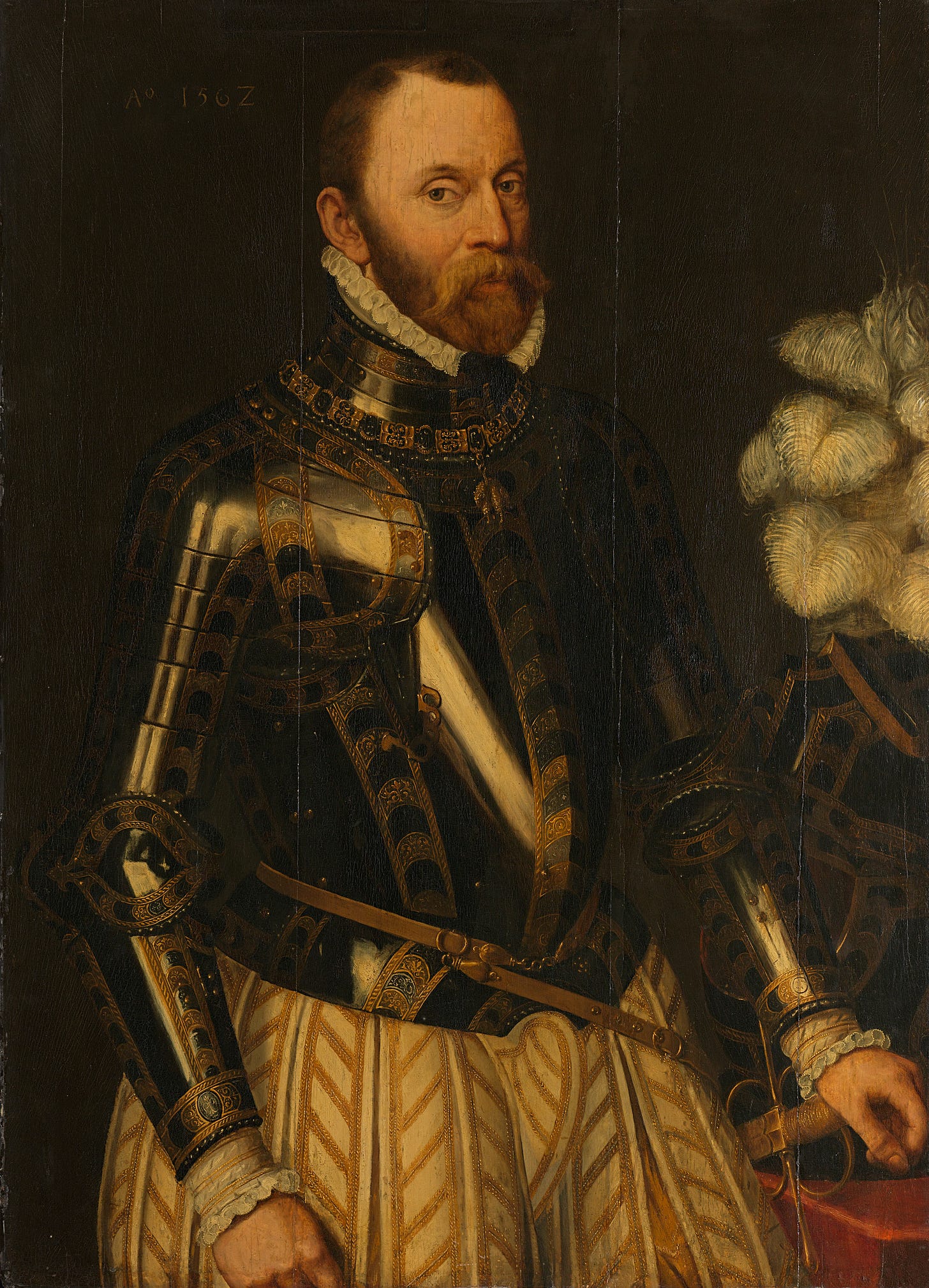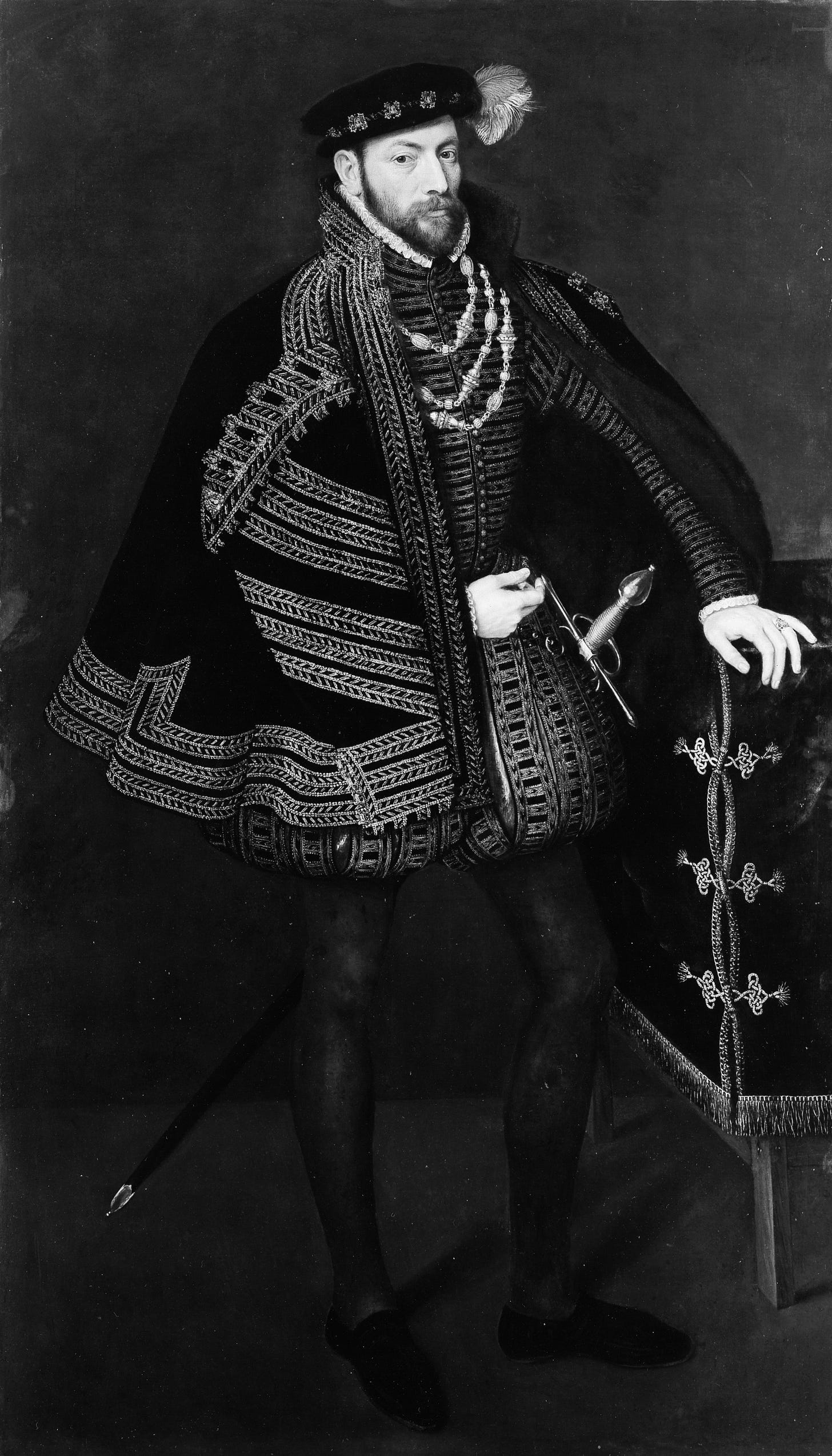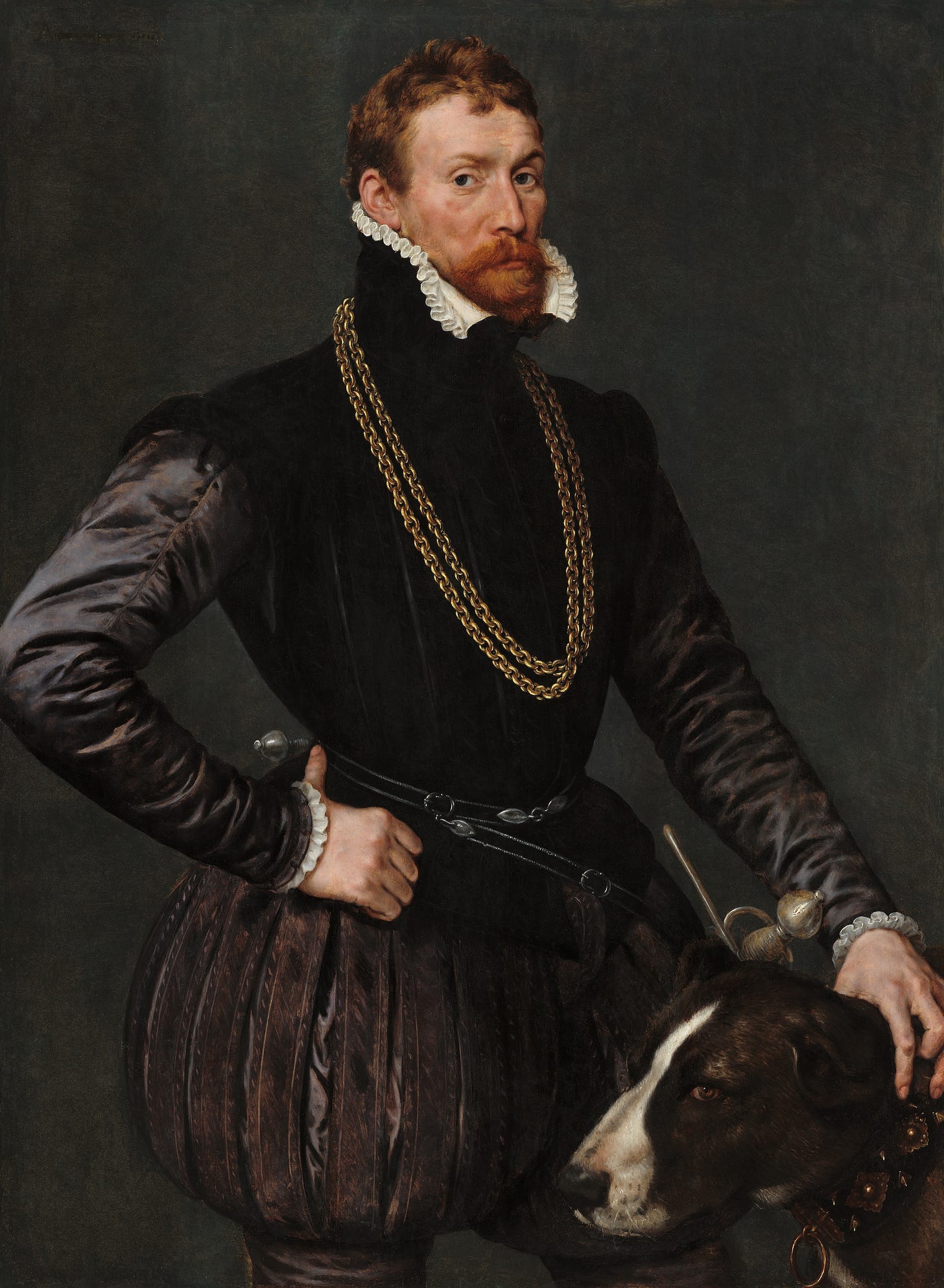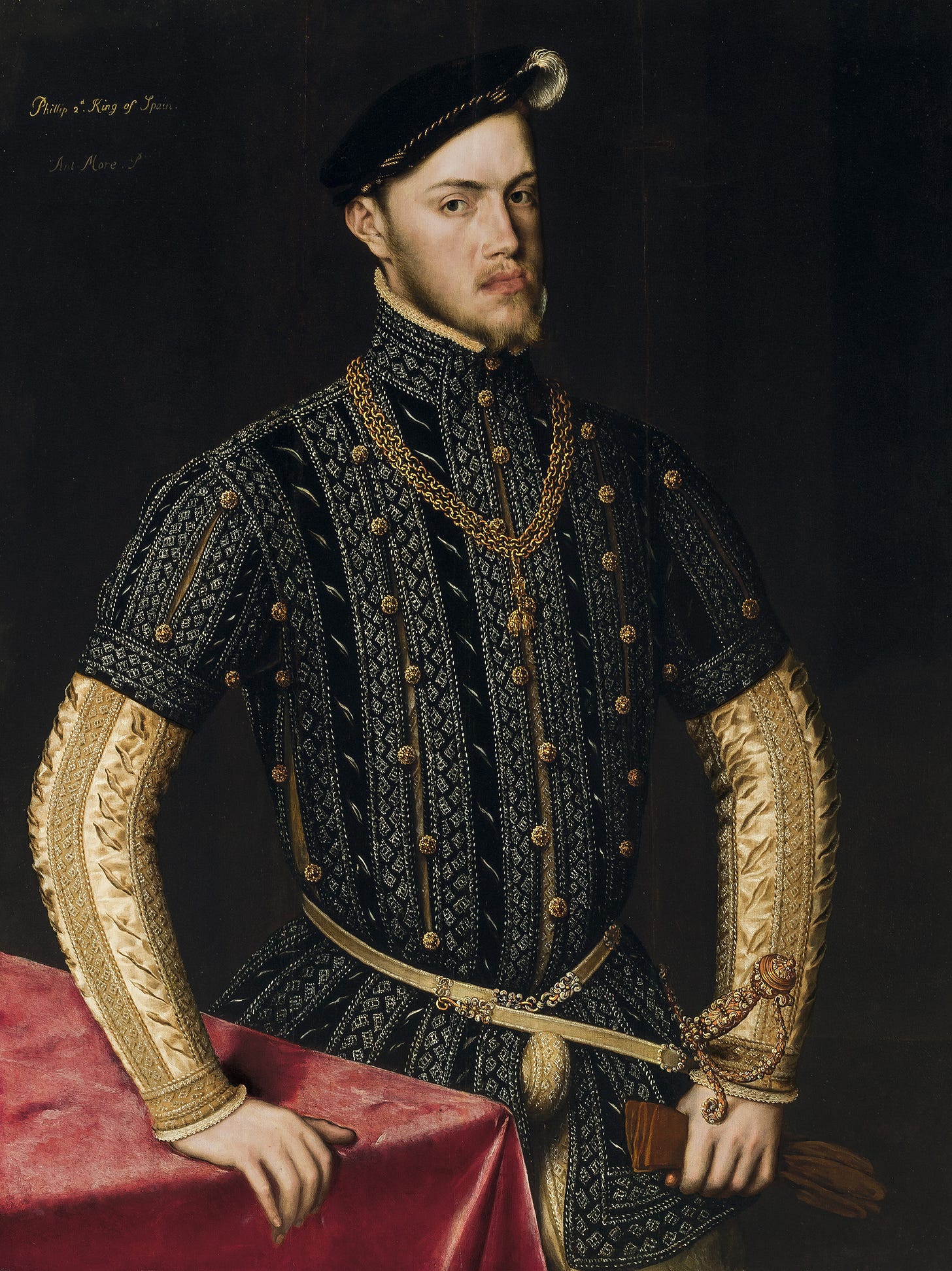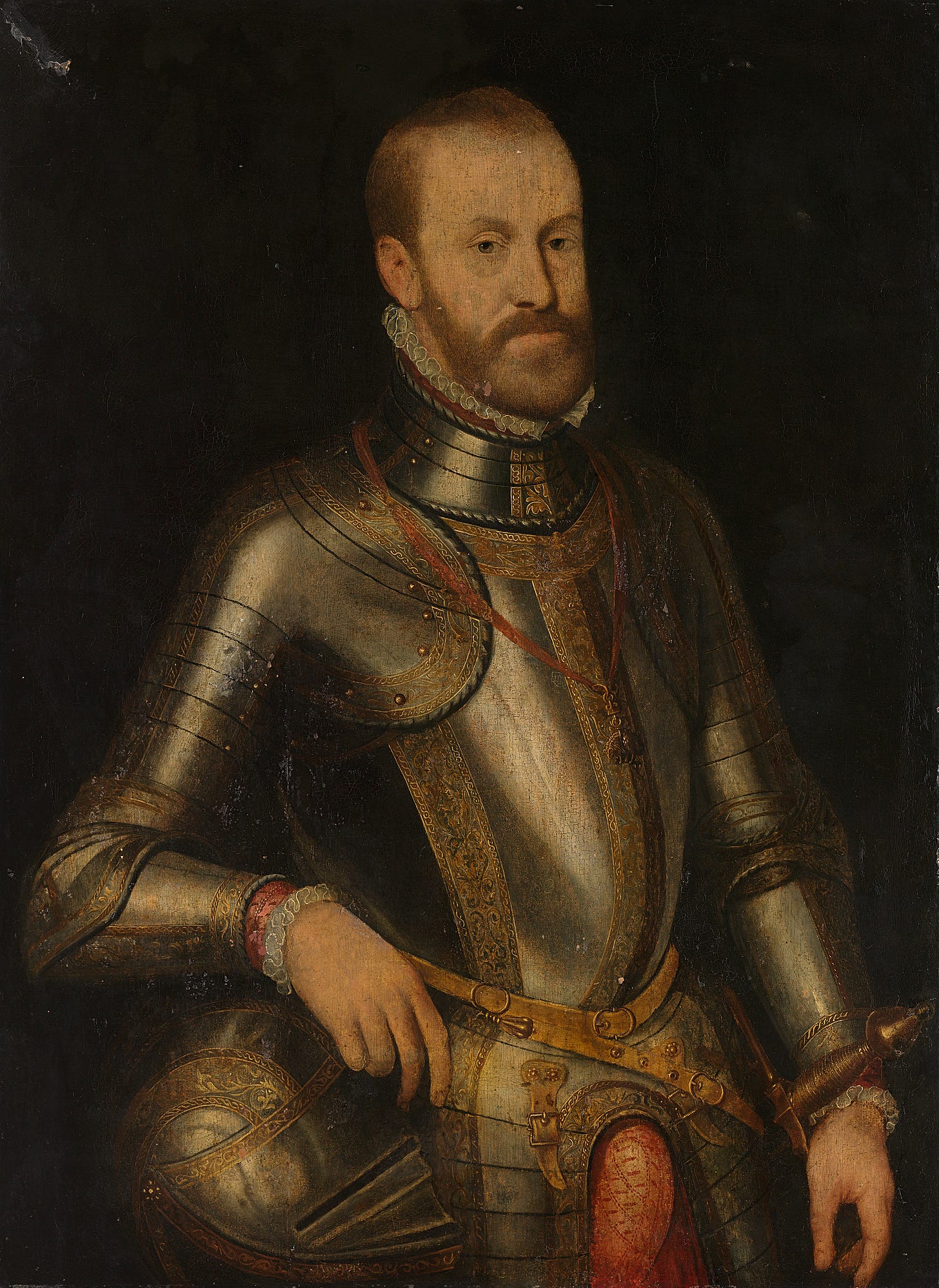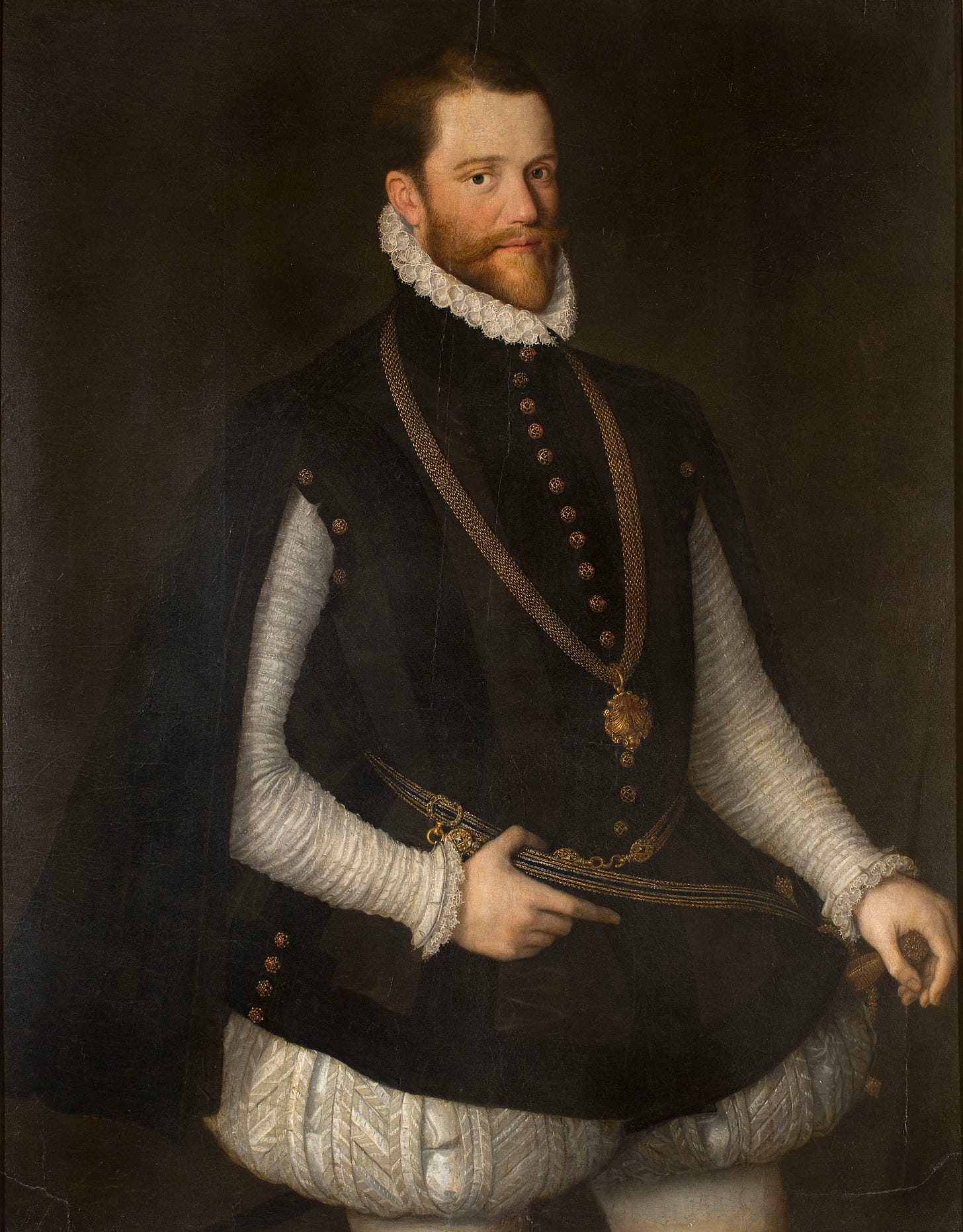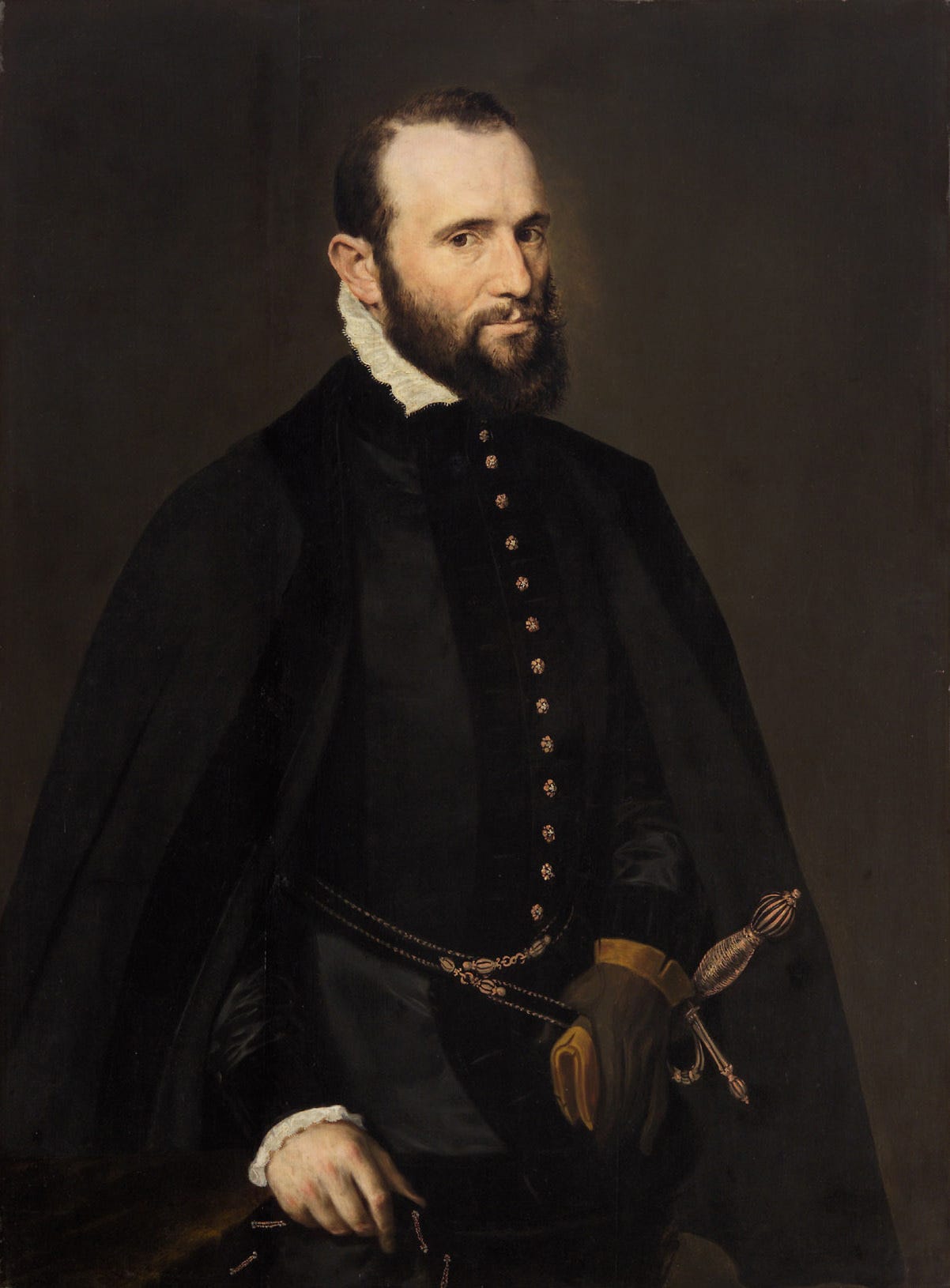Anthonis Mor, also known as Anthonis Mor van Dashorst and Antonio Moro (c. 1517 – 1577), was a Netherlandish portrait painter in demand with European courts of the mid-1500s. As such, he captured quite a lot of sideswords used across Europe in his paintings.
Portrait of Alfonso d'Avalos, c.1530
Fernando Álvarez de Toledo, Third Duke of Alba, c.1549
Portrait of Giovanni Battista di Castaldo, c.1550
Emperor Maximilian II, c.1550
Portrait of a Man, c.1550
Portrait of William I of Nassau, c.1555
Portrait of Alexander Farnese, c.1557
Portrait of a Man in Armor, c.1558
This one is thought to be from his circle, and not from the painter himself. But I’ll count it as a beautiful example of wearing a sidesword with armour.
Cardinal Granvelle's Dwarf, c.1560
One of my favourite hilts. Elaborate enough to make it look interesting, simple enough to preserve a martial look. I assume it has a side-ring and I would marry the hilt with a long and narrow blade.
Philip II at the Battle of St. Quentin, c.1560
Interesting symmetric quillons that would allow you to use the sidesword the same way in both hands.
Philippe de Montmorency, c.1562
Notice the broader blade on the sidesword, indicating that while the age of the thrust had arrived, the cut was not abandoned.
Portrait of a Man, (Possibly Ottavio Farnese), c.1563
Portrait of a Gentleman, c.1569
Portrait of Philip II of Spain
If your hilt blends in your doublet, maybe you have gone too far with the decorations. But we have a lot of museum examples of such elaborate hilts.
Portrait of Philip II, King of Spain
Portrait of a Gentleman of the order of Saint James
Portrait of a man
Some Thoughts
Beautiful sideswords that made me wonder where they are at the moment. Considering the royal figures that handled them, one must have survived to this day. We see elaborate decorations, which makes sense since we are talking about high nobility for the most part. While some are worn with a doublet, a lot are worn in armour. I don’t expect these people to engage in direct combat, but it shows the prevalent fashion of those days. It is not unthinkable to assume that some people would have brought their sidesword to the field of battle.
Since we are talking about the mid to late 1500s, we see the sidesword hilts becoming more complex, but still not to the point of what we see in a few decades on rapiers. At most, these are what I call streak-sideswords, with longer and narrower blades focused on the thrust, but still sideswords. In fact, we can see some clear broad blades on some of the sideswords, indicating that a lot of people preferred a cut-centric blade.
Last, we have clear Italian and Spanish historical figures in the paintings. We could also try to separate the sideswords on this basis. However, considering the mixing between the two at those times, this would be a bit too much to attempt at this point.
